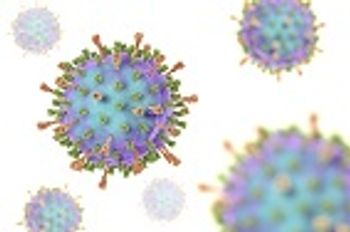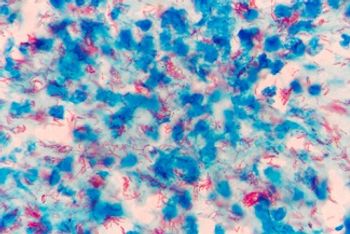
Microbes found in New York City park soil samples contain an array of microbes capable of producing known pathogen-fighting compounds, along with a large number of recently discovered compounds.

Microbes found in New York City park soil samples contain an array of microbes capable of producing known pathogen-fighting compounds, along with a large number of recently discovered compounds.

Ongoing mumps outbreaks around the United States show that the virus can occur even in vaccinated populations, though health officials stress that the mumps vaccine does prevent larger outbreaks from occurring.

New research from University of California Santa Cruz biologists shows how antibodies work to stop astrovirus infections, offering a potentially new way to develop a vaccine and treatment for this infection.

Pneumonia is the fourth leading cause of hospitalization among those living with Alzheimer’s disease, and now a new study by University of Eastern Finland researchers examined the link between the infection and certain antidementia drugs.

A team of 75 researchers from 56 institutions have conducted a global study of tuberculosis strains, finding that some may have adapted to specific human populations.

Congenital cytomegalovirus can cause a number of health issues in newborn babies, and a team of researchers in Japan have developed a prenatal screening method to detect these infections early.

Public Health England and the Department for Environment, Food and Rural Affairs researchers in the United Kingdom found drug-resistant E. coli in a large number of chicken samples, while much lower rates of contamination were observed in beef and pork samples.

Researchers in the United Kingdom have found that predatory bacteria can be used to safely treat antibiotic-resistant Shigella infections, which affect more than 1 million people worldwide each year.

Recent outbreaks of highly pathogenic H5N8 avian influenza in Northern Europe, Russia, and the Middle East are worrying neighboring countries and have led to the culling of tens of thousands of chicken, turkeys, and ducks.

A recent outbreak of highly pathogenic avian influenza in commercial chickens and ducks in South Korea has health officials in the country on high alert and some poultry farmers taking quarantine measures.

A recent study of employees at an industrial hog facility found that the livestock workers were more likely to carry Staphylococcus aureus bacteria in their noses, including antibiotic-resistant isolates.

A study from University of Washington researchers uncovers how hospital laundry facilities may harbor dangerous Clostridium difficile spores, creating a potential community source for the bacterial pathogen.

A study of 100 chickens collected from a marketplace in India finds multidrug-resistance in an emerging bacterial pathogen, and has researchers calling for improved food safety, monitoring, and surveillance.

In a new approach to fighting bacterial pathogens, Johns Hopkins University researchers have developed a new antibiotic intended to fight tuberculosis and other drug-resistant infections.

A new service in the United Kingdom, made possible by the National Health Service, reportedly offers a fast and accurate diagnosis of bacterial throat infections, promising a new way to reduce unnecessary antibiotic prescriptions.

Fifteen countries continue to see 72% of all childhood deaths from pneumonia and diarrhea, the two biggest killers of children under five years of age worldwide, says a new global report.

In a new study, researchers from the United Kingdom have found that cystic fibrosis patients are more likely to pick up multi-drug resistant infections in hospitals than was previously believed.

Researchers in the United Kingdom have made a new genetic discovery in the link between Epstein-Barr virus and related cancers, including a potential way to stop the cancer-causing effects of these infections.

A tropical species of bed bugs has made a surprise appearance in Florida, according to a team of state entomologists, raising questions and concerns about a possible outbreak

As health officials investigate a recent outbreak of acute flaccid myelitis in Washington State, more cases of the rare condition have appeared in other Western states; questions about the cause remain unanswered.

European researchers have found that bacterial DNA molecules called plasmids are driving the evolution of antibiotic resistance in ways previously unknown.

Emergency room providers are misdiagnosing too many patients with cellulitis, according to a new study, causing unnecessary hospitalizations and inappropriate antibiotic use.

The scope of multidrug-resistant tuberculosis in West Africa, until recently, has not been well-understood, but a new study on eight countries in the region shows that the superbug is more common than previous estimates suggested.

University of California and Stanford University researchers have identified how temperature and humidity work together to affect flu season.

A new study has found no correlation between receiving the Tdap vaccine during pregnancy and birth defects.

A new study from the CDC and the Pew Charitable Trusts shows that 52% of patients are receiving the wrong antibiotics for their sinus infections, middle ear infections, and pharyngitis.

Predicting how long it takes for an infectious disease outbreak to begin may help health officials develop an early warning system, according to the authors of a new study on lag times in epidemics.

A team of researchers from Tufts University and the University of Maryland have discovered a way to predict cholera outbreaks using satellite data from coastal waterways.

The Centers for Disease Control and Prevention (CDC) has identified 18 cases of new swine flu viruses in Ohio and Michigan state fair attendees, highlighting the need for precaution when handling pigs.

Students from the University of Sheffield in the United Kingdom have developed a new diagnostic tool which promises a novel way to detect bacterial infections and prevent the inappropriate use of antibiotics for viral infections.